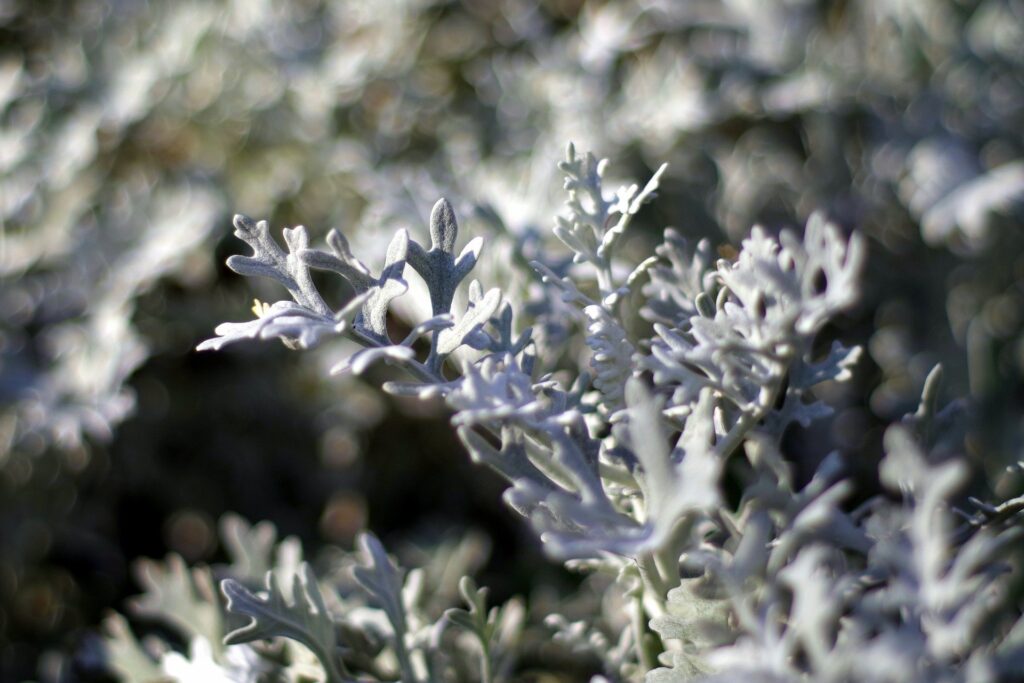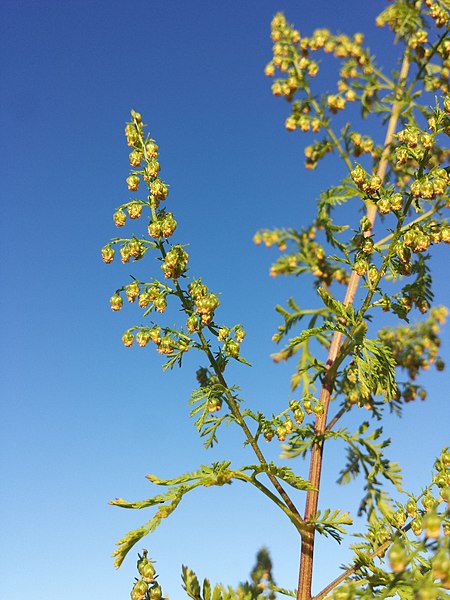Herbal remedies that can boost immunity are more relevant now than ever before. Artemisia annua benefits are in the limelight when it comes to fighting infections, viruses, and all fevers.
Regardless of where you are in the world, the health narratives presented in the news these days continue to shift.
One thing you can know for sure – ultimately, your health and well-being are your responsibility. And that’s where the healing power of herbs can help you reach your wellness goals.
The Beauty Of Herbs
One of the key benefits of all herbs is that we don’t have to wait for laboratory experimenting or risk the results of fast-tracked “solutions.” The enormous worldwide herbal repository is already time-tested. Reviewing history, we see that traditional cultures have depended on the healing power of herbs, plants, resins, and minerals over thousands of years.
For almost every plant found on this beautiful earth, there is at least one culture that has thrived through its practical use to prevent, treat, and cure disease.
Artemisia annua is one herb that is easily available and well-known over time as a powerful immune system booster.
Artemisia Annua
Artemisia L. is part of the large Asteraceae plant family with numerous varieties, all of which have notable healing properties. One of the most common, artemisia annua also known as Sweet Annie or Sweet Wormwood, is excellent for healing infections. This humble little shrub has silvery fern-like leaves, bright yellow flowers, and a warm aromatic fragrance.
This is not to be confused with artemisia absinthia, also known as “Wormwood.”
High in antioxidants, artemisia annua is a potent immune system fortifier, reducing fevers and other ailments. For this reason, it is prized in traditional medicine.

Artemisia In Traditional Chinese Medicine (TCM)
Artemisia annua has enjoyed a starring role in Chinese Traditional Medicine for thousands of years, treating both chronic and other serious diseases.
The flowering plants grow best at high elevations. Those thriving in the Sichuan Province of China also contain the highest amount of its most active ingredient, a phytochemical lactone known as artemisinin.
In Traditional Chinese Medicine, artemisia annua, or Quing Hao, is specifically used to treat fevers. TCM describes artemisia annua as a “balancing herb that promotes health and vitality” and as “cooling and detoxifying.”
It contains over 20 active ingredients! And, as with all whole plant foods, it’s the synergy of these components that produces the most profound results. Pharmaceutical companies, realizing the power of artemisia, isolated artemisia’s most active ingredient, artemisinin. Several companies have produced high-ranking anti-malarial drugs that depend on artemisinin.
However, a natural tea infusion of artemisia annua leaves provides more than ten times the results of an isolated element. The whole herb has been treating malaria naturally for thousands of years.
Regarding today’s health challenges with novel viruses, TCM practitioners combine artemisia with modern Western medicine, bringing better results in reducing specific symptoms. Patients get relief from cough, sore throat, fatigue, and fever. The course of the disease shortens and the probability of more severe symptoms occurring is lessened.
Artemisia Annua Benefits In African Traditional Medicine
Africa, too, has millennia of history using artemisia annua as a powerful anti-malarial folk remedy. The herb also treats the deadly African Sleeping Sickness (Human African Trypanosomiasis) caused by bacteria carried by the tsetse fly. Like malaria, this debilitating disease can cause meningoencephalitis (infection of the brain and spinal cord) and eventual coma and death.

With historical knowledge of artemisia, it’s no surprise that modern-day Africa has tried this wonder herb in light of current world health concerns, providing herbal teas containing artemisia to their populations.
Madagascar was the first country to develop an herbal tea remedy featuring artemisia annua, specifically to boost immunity.
The country’s Malagasy Institute of Applied Research [IMRA] was formed many years ago to integrate traditional herbal knowledge with modern medicine. The Institute has collected a large database containing thousands of traditional African herbs.
With the world’s focus on novel viruses this year, IMRA was determined to see what they could develop to aid their people.
Those who choose to drink this immune-enhancing natural tea have both a preventative and a treatment for viral threats.
Artemisia’s twenty bioactive ingredients work together synergistically. Like other herbal remedies, artemisia annua benefits are still evident even after millennia of human use.
Other African countries, including Nigeria, Chad, Cameroon, and South Africa, successfully tried natural remedies to treat fever and flu symptoms. Germany also began studies on the herb and reported that artemisia shows success in combating the virus.
Recent Study of Artemisia Annua in Western Medicine
According to the NCBI (National Center for Biotechnology Information), in 2021 extensive research was conducted on artemisia annua and artemisia-derived products for reducing SARS fevers. These substances were shown as effective anti-infection phytochemical (plant chemical) treatments for fever and other symptoms caused by SARS variants.
Health Benefits Of Artemisia Annua
Below is a list of the most important health benefits of artemisia annua.
1. Anti-Parasitic and Anti-Cancer
In 2020, news reports announced that the SARS group of diseases (described as viral infections) and malaria (a parasitic infection) share similar infectious characteristics.
Three anti-parasitical drugs, ivermectin, hydroxychloroquine, and artemisinin, are reported by the NCBI as effective in treating cancer. This indicates that cancer behaves as a parasitic infection, and remedies for cancer should include the use of anti-parasitics.
2. Anti-Inflammatory
Artemisia annua treats gastrointestinal conditions such as IBS, Crohn’s Disease, and dyspepsia. Its anti-inflammatory actions reduce inflammatory swelling and accompanying pain.
3. Antibacterial
By strengthening healthy cells, artemisia annua helps prevent infections, while dismantling infections that are already present. It is excellent for treating skin conditions, wounds, ulcers, and Lyme Disease, which is caused by bacteria transmitted from tiny deer ticks.
Artemisia is also effective against E-coli and Salmonella.
4. Anti-depressant
Soothing essential oils in artemisia annua have a calming effect on the mind. Therefore, they are popular ingredients in sachets, potpourri, and sleeping pillows. Artemisia’s essential components counteract anxiety, mental stress, and depression, particularly in times of stress.
5. Heart Healthy
Artemisia annua contains antioxidants that help strengthen the heart and release toxins that can cause blockage.
6. Treats Frequent Bladder Infections
Artemisia annua also treats bladder infections and is a diuretic for water retention.
7. Treats All Kinds Of Fever
We have seen that artemisia annua successfully treats malarial fever and the fever associated with this novel virus. It is also effective for various fevers, including mild summer fevers, and for dizziness.
Artemisia annua was recognized among leading modern medicine researchers as early as 2005 as an effective treatment for malaria and the SARS coronavirus (Sars-CoV).
This powerful herb so effectively reduces inflammation, that it can keep our bodies from producing an overabundance of defensive cytokines, avoiding potentially life-threatening “cytokine storms.”
8. Eye Wash For Eye Infections
A tea made from artemisia annua leaves can be used as an eye wash to treat dry eyes and infection. After boiling the leaves, the tea is left to steep for at least 30 minutes. When cool, the leaves are strained and the tea can be applied with an eye-dropper (2-3 drops at a time) as many times per day as needed over a few days. Artemisia annua flushes the eyes of toxins, relieving redness and eyelid swelling.
Conclusion
Artemisia annua is available in dried form for making tea and as an extract. If you grow artemisia annua, you can use the fresh leaves and flowers to make a tea or infusion. You can also dry the flowering stalks (with leaves) for future use.
Additionally, you can make a tincture using dried artemisia annua leaves, stems, and flowers for a long-lasting, potent herbal remedy.
However you take it, you’ll know that you are doing something great for yourself when you choose this wonderful, immune-strengthening herb.
Image Attribution
Yellow flowers image – Kristian Peters — Fabelfroh 11:40, 16 September 2007 (UTC) / CC BY-SA wikimediacommons.org
Disclaimer: This post is for informational purposes only. Any material herein is the expressed opinion of the authors and is not a substitute for professional advice, diagnosis or treatment, nor has it been evaluated by any regulatory agency. All use of information herein is solely at the risk and discretion of the reader. Have a blog? This post is for sale. Contact us.